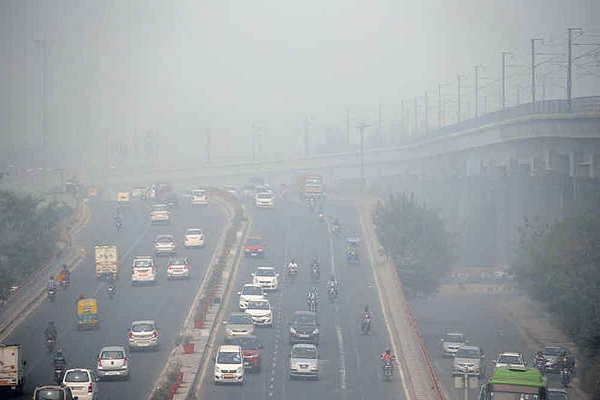

Following the Diwali celebrations, Delhi’s air quality has taken a severe hit, with Anand Vihar recording an alarming Air Quality Index (AQI) of 969, considered hazardous. Violating the Supreme Court’s ban on firecrackers has exacerbated pollution levels across Delhi-NCR, leading to thick haze and reduced visibility on roads.
Despite the Supreme Court’s pre-Diwali order on the use of barium and banned chemicals in firecrackers extending to the entire country, people in the National Capital Region (NCR) continued to burst crackers, worsening the already deteriorating air quality.
On Diwali day, Delhi briefly experienced improved air quality with an AQI of 202, the best in three weeks. However, post-Diwali, the situation worsened rapidly. At 5.30 am on Monday, Delhi’s overall air quality stood at 514, categorized as “hazardous” by IQAir, making Delhi the most polluted city globally on that day.
Anand Vihar, one of Delhi’s regions, recorded the highest pollution levels with an AQI of 969 at 5 am. The Central Pollution Control Board (CPCB) reported poor air quality (AQI 289) in Anand Vihar at 5 am, with PM2.5 levels reaching 500, 20 times higher than the World Health Organisation’s limit.
Other areas such as RK Puram, Noida, and Gurugram also faced severe air quality issues, with AQI levels in the “very poor” to “severe” range. The concentration of PM2.5, a prominent pollutant, remained alarmingly high.
Delhi’s government has taken measures to address the crisis, including a complete ban on firecrackers. In response to the pollution, the idea of ‘artificial rain’ was considered, but unexpected rainfall provided temporary relief.
Despite the slight improvement in air quality on Diwali day, the post-celebration scenario indicates a likely resurgence of pollution levels, posing significant challenges for the residents of Delhi. The situation emphasizes the urgent need for sustainable measures to combat air pollution and protect public health.